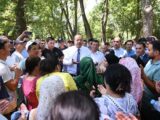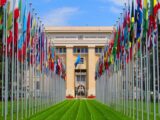How is Tashkent being killed and is there a chance to save it?
08.08.2023For years, Tashkent officials have been destroying the capital’s infrastructure, ignoring the norms of urban planning and ecology. As a result, we ended up with a city engulfed in chaos. Because of Tashkent’s haphazard and sometimes illegal construction, old engineering networks cannot withstand and are constantly exploding, bursting and burning. We tell you about the capital’s main urban planning mistakes that have brought it to a state of collapse.
By: Konstantin Bashlayev (Константин Башлаев)
Source: https://uznews.uz/posts/66899
Masterplan
All global problems of Tashkent’s development are connected with the General Plan, or rather, with its absence. The last General Plan of the city was developed in the 1970s during the Soviet era. The document was designed for about 20 years. And Tashkent has not had a new General Plan since then. That is, all these 30-odd years we have actually been building the city blindly, violating a huge number of urban planning norms. Today, automobile chaos on the roads, overloaded public transportation, overcrowded schools and kindergartens, seized soccer fields and playgrounds for new buildings, green yards poured with concrete for parking lots, all this is a consequence of the fact that the city has no development strategy.
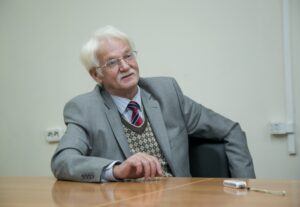
Alexander Kuranov
“Why is everything so shitty? Because architects as specialists have been relegated to the background, wiped out, to put it mildly,” says architect Alexander Kuranov (Архитектор Куранов). – Because architects are concerned about standards, about the residents, they don’t want to make the city bad.
Architect Kuranov said:
“We have our own Hippocratic Oath, the so-called Athens Charter. It was adopted on a global scale in the 1930s, and we still follow its commandment: “Do no harm”. We were always interfering with officials, telling them: “You can’t build here, you can’t build there either, it’s not allowed here, you need spaces here, a public garden here, a playground here”. In order to build in violation of building norms and rules, the authorities liquidated in 1993 the State Construction Committee of Uzbekistan, which was in charge of architectural supervision and urban planning policy in the city and the republic. They also abolished the Urban Planning Council, which consisted of super-specialists: architects, designers, seismologists, ecologists, representatives of fire and road services, and the Department for the Disabled; today all of this is gone.
They remodeled Gosstroy to their liking and called it the Ministry of Construction. Now the Ministry of Construction is in charge. In a hospital, it is not surgeons who perform surgery, but orderlies. Now the Ministry of Construction does not consider our norms and building codes
Let’s say two nine-storey buildings stand opposite each other, there should be a distance of 40 meters between them. But now they are building new houses between them and connecting them to the old utilities. This is a gross violation. We saw the consequences this winter, when the whole infrastructure went down.
And it went down because of the negligence of agencies that thoughtlessly issued permits for the construction of buildings where it was not allowed to build at all. In the “General Plan”, there are rules for the number of floors in a house. When a developer wins a tender, he understands how many floors he is allowed to build. He has a technical specification. That is, he cannot build a 24-storey tower in the center of Tashkent if the “General Plan” allows him to build only 5 floors. But the trouble is that there is no “General Plan” of the city, so developers do whatever they want. They build huge high-rises, connecting them to the Soviet worn-out communications, which are 50-60 years old, loading the infrastructure of the district to the limit. In all civilized countries, first create infrastructure (schools, hospitals, kindergartens, transport), lay new engineering networks, and then build houses. In our country it is the other way around.
“Builders, investors, developers – they are not interested in schools, clinics and kindergartens at all,” says architect Alexander Kuranov. – They are interested in square meters to sell and get money for them. That’s all”.
Traffic collapse
As it happens, pedestrians in Tashkent are second-class citizens, losers who have not saved up for cars and have to travel around the city on foot, by bus or subway.
“Tashkent is now, unfortunately, being rebuilt for cars,” said Temur Akhmedov, founder of the NGO Council for Ecological Construction of Uzbekistan, in an interview with Dunyo Boylab. – In the world, this has long passed the stage. We are at least a quarter of a century behind in urban planning. A city should be built not for cars, but for people. And the car is just a tool – one of the means of transportation”.

Temur Akhmedov
At some point we missed everything again and did not notice how we gave power to cars. Cars have seeped into every yard in the city, we have sacrificed playgrounds for parking lots, we are constantly widening roads, and the flow of cars is not getting smaller. The city freezes in traffic jams during rush hour ».
Tashkent’s entire circulatory system is clogged with huge blood clots. And public transportation, which could solve the issue, is on the contrary being cornered. And this is a big mistake.
“Now the best way to get around the city is personal transportation,” says urbanist Iskandar Soliev. – People buy cars because public transportation is in a deplorable state. The policy is such that people are provoked to drive personal cars. Widening of roads in the city center does not solve the problem with traffic jams at all. Make 100 lanes, they will still be clogged with cars. Such a road always ends at an intersection, where it narrows to two or three lanes, resembling a bottle neck. And the result is one huge, deafening traffic jam that clogs all the streets in the neighborhood. There’s no solution to traffic jams. They build huge flyovers and interchanges in China, but it doesn’t work
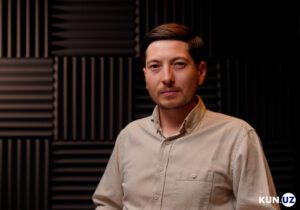
Urbanist Iskandar Soliev
The most correct thing is to develop public transportation. In order for it to become mobile and comfortable, we need to remove passenger cars from the city center, which are parked everywhere on sidewalks and in yards. If we make the center of Tashkent paid for cars, many people will be forced to leave their cars in free parking lots outside the center and will choose public transport.
Another cause of transportation chaos in Tashkent is the low and uneven quality of education in schools and kindergartens. Yes, yes. Education can directly influence traffic chaos in the city. If education in your neighborhood is of poor quality in a local school or kindergarten, you will be forced to take your children by car to where it is better – most often to the center of Tashkent. Can you imagine what happens to the city when almost a million schoolchildren and preschoolers simultaneously travel to the center with their parents by car every day?
There are not enough schools in Tashkent, not enough clinics, not enough sports grounds at schools,” said architect Alexander Kuranov. – This is because we have stopped adhering to urban planning norms. When the number of residents increases, it is necessary to create additional educational places in schools and kindergartens.
I take my granddaughter to public school every morning, pick her up at 12:00 and take her to music school, from there to English classes, and in the evening I take her to volleyball.
Often I ask people, “Why do you take your child to study in the city center?” They all answer in the same way: “There is a good school there, there are good teachers there”. So we need to build good schools with good teachers. So, we need to level the salaries of all teachers in all districts, so that good teachers can work in any school, not only in presidential or private schools. The child will then start going to classes himself, will not cross these dangerous roads and overpasses. But schools should be of high quality, like private schools. A child should be busy all day long, so that he or she is not driven five times all over the city, this will reduce the enormous number of cars on the roads”.
Tashkent-City
The idea of creating a city of the future in Tashkent was taken up by many people. We wanted to build one of the symbols of New Uzbekistan – a huge modern skyscraper that would epitomize the new way of life of the capital. But, according to architects and historians, it was a big mistake to build a skyscraper in the historical part of the city.

“My opinion is that it should not have been done. And if Tashkent City is to be built, it should be on the outskirts of the city,” says journalist and local historian Boris Golender.
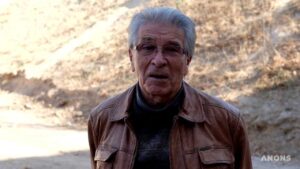
Boris Golender
«These were the old central Tashkent mahallas. They just had to be reconstructed for tourism, so that they would have the appearance of antiquity, and maybe even be uninhabited, museum-like. This is the center of the city, forming a silhouette in memory of people. Everyone should preserve history. But it makes no sense at all to destroy one thing in order to build another, and a worse one at that”.
There is another point of view on the matter. On the place where Tashkent City is now located, they planned to create a grandiose array of greenery that would have allowed the entire neighborhood to breathe freely,” architect Alexander Kuranov said. – And it would have been not only a green strip, but also a large number of ditches, pools and reservoirs. The architects have never laid claim to this plot”.
Uzbekistan’s largest shopping center, Tashkent City Mall, is scheduled to open in Tashkent City this September. Only in the perimeter of the business center will live and work more than 37 thousand people, and the total daily traffic is estimated at 100 thousand.
Construction of large shopping centers in the city center is a big problem. Because of the huge parking lots in the area, the city land is less efficiently used. After the construction of Tashkent City Mall, the whole neighborhood may change dramatically.
There is another point of view on the matter. On the place where Tashkent City is now located, they planned to create a grandiose array of greenery that would have allowed the entire neighborhood to breathe freely,” architect Alexander Kuranov said. – And it would have been not only a green strip, but also a large number of ditches, pools and reservoirs. The architects have never laid claim to this plot”.
“The construction of Tashkent City Mall is a big mistake,” argues urbanist Iskandar Soliev. – Soon it will be launched, and the underground parking that was made there will not be able to properly serve all the guests of the shopping center. A grandiose clot will form. Such a huge shopping center should not be in the city center, from the urbanistic point of view, it is wrong
Because the mall is a huge magnet that will attract a bunch of people with private cars. You can see what happens in Magic City, there are always traffic jams there. People are provoked to come there by private cars, but there are not enough parking spaces for everyone.
Human ant-hill or Humant-hill
All the new neighborhoods of which look like termites. Their distinctive feature: huge houses with cells, lack of courtyards, extinction of the territory during the daytime due to the absence of stores, cafes, restaurants and offices on the first floors.
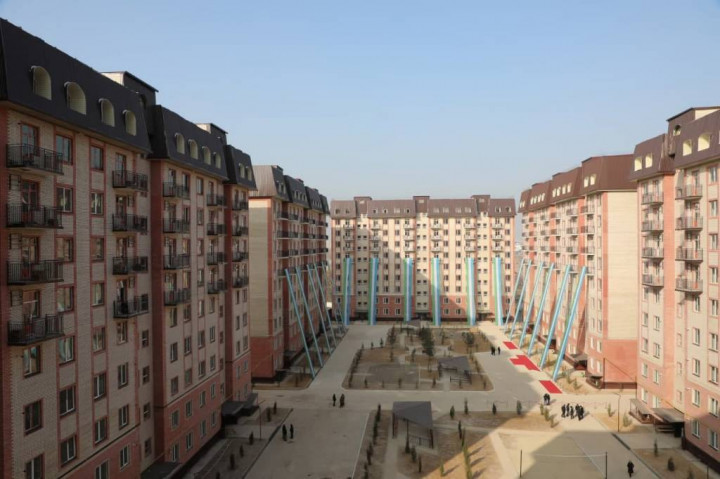
Yangi-Hayot district, photo: Darakchi
“Neighborhoods do not form streets, there is no personal space, no courtyards, social ties are broken. There is only asphalt and parking lots everywhere. Perhaps in the future this neighborhood will turn into a ghetto, there is a huge population there, and there are no green areas where people could spend time. There is heat everywhere and nothing else. The infrastructure is not developing normally”, says urbanist Iskandar Soliev.
In time, when people’s idea of comfortable housing changes, the educated and well-off part of the population will start selling apartments in these anthills en masse.
Only those who have no opportunity to move will remain. Because of the outflow of people, real estate prices will fall, and the remaining young people will start to degrade, and crime will grow.
Utilities
Tashkent today resembles a time bomb. Due to the disorderly and hasty construction of high-rise buildings, the city’s engineering networks are working at their limit, especially communications. Because developers often connect their houses to the old Soviet communications, they do not install new ones – it is expensive.
“In 1970-1980, I participated as an expert in the development of the General Plan of Tashkent,” says urban planner Muradkhan Usmanov.
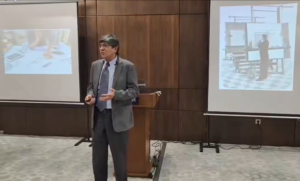
Muradkhan Usmanov
– We laid out then engineering communications at a rate of 130-140 percent. These 30-40 percent play their part in the life processes we have now. After all, it is no secret that there are practically no new engineering communications during the construction of new facilities”.
Our utilities are 50-60 years old. Due to the fact that the city is in a state of chaos, the infrastructure is not developing properly. New engineering networks are built into the old ones, the number of storeys of new buildings is exceeded: instead of 4-5-storey houses they build high-rise buildings. The number of storeys has grown, the population has grown, and the load on engineering networks is growing: pipes are starting to burst, substations are constantly being knocked out – this is the consequence of improper development of the city.
“Tashkent is seriously ill. I won’t say it’s agony or death spasms, but the city is quite seriously ill,” said architect Alexander Kuranov. – Especially the energy part: water supply, sewerage, and power grids. Now there will be frequent accidents, in summer there will be burning of electric substations and cables – everyone turns on air conditioners. Everything will be unfortunate.
Water will be very bad. Water consumption is very high. With predicted warming, Charvak and Chimgan will not give so much water to the Chirchik channel. That is why it is necessary to reserve water, it is necessary to let it go in reverse, in Europe they collect this water, do not pour it into the sewerage system, they use it for fountains, watering lawns, washing cars. Now 90 percent of good water goes into the sewerage system”.
Yangi Toshkent – New Tashkent
No sooner had we solved the problems of old Tashkent, and we are already planning to build “New Tashkent”. According to the draft General Plan, the city is to be built between the Chirchik and Karasu rivers by 2045. The area of the city is 20 thousand hectares, and it will be designed for 500 thousand people.
“New Tashkent is a terrible project from an ecological and economic point of view,” urbanist Iskandar Soliyev said. – We have no need to expand the city, much less take over such a green zone, which fulfills the function of Tashkent’s lungs. We have a lot of land that developed as new mahallas after the 1990s, and we can develop it. There is enough space in Tashkent, the territory is large.
There are international “green” standards such as LEED and BREEAM. Hundreds of thousands of buildings have been built according to them all over the world, millions of square meters. And these standards prohibit building housing on agricultural land, because it is necessary for the food security of the city. And the land for “New Tashkent” is such. Historically, there has always been a food belt around each city, where vegetables and fruits were grown to feed the city. If Tashkent now grows wider, we will take away food lands from the city. So food will come from somewhere far away. So it will increase in cost, because we will have to build a logistics chain: trucks, warehouses, refrigerators. Now, farmers grow fruits and vegetables half an hour away from the city, and they come straight to our markets, roughly speaking, from the garden to the table.
“The main problem of this project is initially illiterate calculations,” says architect Alexander Kuranov. – The most important thing is the population calculation. Population depends on urban planning factors. If there will be no production facilities there, it means that this population will move somewhere in search of work, not counting pensioners and schoolchildren. Where will these 500,000 people work? In old Tashkent? Even if the administration will work in New Tashkent, a large number of employees will go there through the whole city, which will cause big traffic jams. Motorization will develop, not public transport. The city will become automobile-dependent. That’s already happening. So, it will again be years of wasted time”.
And we ask why we need to build a “New Tashkent” when the old one is failing. Instead of renewing all communications in the city, creating modern infrastructure, building hundreds of new schools and kindergartens, greening the capital, and restoring public transportation, we are going to pour billions of dollars into the unknown. Exactly into the unknown. There is no other way to call this project.
Translated by: Farida Sharifullina

